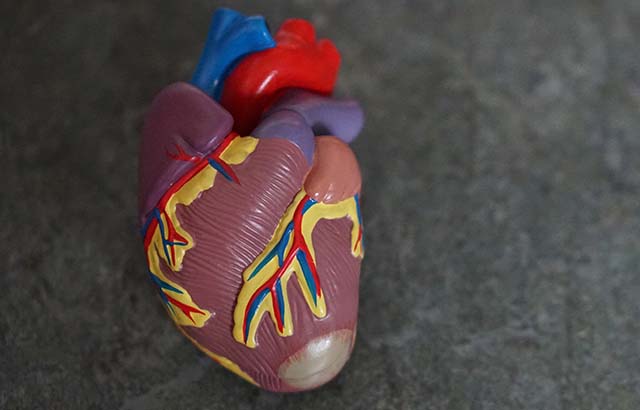New study reveals insights in the genetic architecture of right ventricular structure and function
The study, published in Nature Genetics, provides the first large scale insight into the genetic basis for the function and structure of one of the most important parts of the heart, the right ventricle (RV).

Heart Model.
The RV is responsible for pumping blood into the lung vessels where it picks up oxygen and releases carbon dioxide. Due to various anatomical limitations, the RV can be difficult to image limiting the number of genetic studies involving the RV.
Researchers from Queen Mary University of London used a novel machine learning technique to train a computer to accurately analyse the RV images from magnetic resonance imaging (MRI) studies of thousands of participants in the UK Biobank study. Using this information, they performed a genetic association analysis to understand the genetic factors influencing differences in RV structure and function in a general population. The team discovered a total of 25 regions in human genome associated with variation in RV measurements. The genetic risk score of RV predicts heart artery disease and a heart muscle disease called ‘dilated cardiomyopathy’.
The left ventricle (LV) is the main pump of the heart, responsible for pumping oxygen-containing blood to the body. Despite the interdependent nature of the LV and RV, this study describes genetic determinants of RV that appear more specific to the RV.
Dr Nay Aung, NIHR Academic Clinical Lecturer at Queen Mary University of London, said: “We were able to replicate these findings in a completely different cohort of patients in which RV structure and function was measured differently. Some genes that are associated with RV variation play an important role in regulating muscle contraction and how cells adhere to each other in the heart.
“This study provides the first comprehensive assessment of the genetics of RV structure and function in a general population. The findings can be used to better understand the genetic basis of cardiovascular disease and have the potential to improve our diagnosis and treatment of cardiovascular disease when taken in the context of the wider cardiogenetics literature.”
This study was based on a population of individuals of European descent and these findings may vary in a more genetically diverse population.
Further information
Aung, N., Vargas, J.D., Yang, C. et al. Genome-wide association analysis reveals insights into the genetic architecture of right ventricular structure and function. Nat Genet 54, 783–791 (2022). https://doi.org/10.1038/s41588-022-01083-2